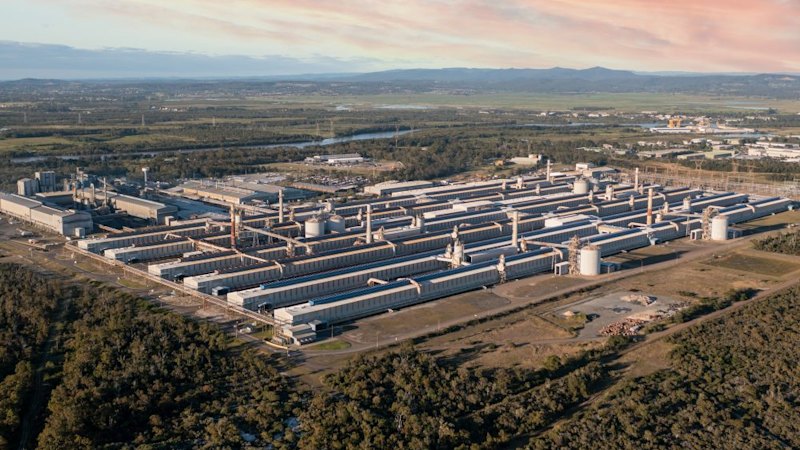
UPDATE: The future of the Tomago Aluminium Smelter, located northwest of Newcastle, hangs in the balance as it consults with employees about a potential shutdown when its electricity contract expires in 2026. This urgent news follows a week of protectionist discussions led by billionaire Andrew Forrest and Harvey Norman CEO Katie Page, who are advocating for a revival of domestic manufacturing.
As of just yesterday, Norsk Hydro announced it has written down the value of its 12.5 percent stake in Tomago to zero, highlighting the smelter’s ongoing struggles amid soaring electricity prices and fierce international competition. With over 1,000 employees directly dependent on the facility, its closure would have devastating effects on the local economy and workforce.
During a press conference in Canberra, Industry Minister Tim Ayres expressed the Albanese government’s commitment to exploring every avenue to keep Tomago operational. “We are absolutely determined to exhaust every opportunity,” he stated, emphasizing the importance of the smelter for the Hunter Valley region and Australia’s economy.
In a noteworthy move, the federal and NSW governments offered a short-term assistance package to sustain operations at Tomago, but Rio Tinto has rejected this proposal, labeling it a mere “sugar hit” that fails to address the critical long-term issue of securing affordable energy.
The situation is further complicated as the Albanese government attempts to pressure Rio Tinto into accepting a comprehensive support package, amidst a backdrop of other struggling industrial facilities, including Glencore’s Mount Isa copper smelter and Nyrstar’s zinc and aluminium smelters in Tasmania.
The looming possibility of Tomago’s closure poses a significant challenge to the government’s “Future Made in Australia” vision aimed at revitalizing local manufacturing. It raises uncomfortable questions about the feasibility of relying on renewable energy sources, which the government has promoted as the future of energy.
Australia’s transition to net-zero emissions by 2050 is increasingly being called into question, as high energy costs threaten the viability of energy-intensive industries. The government faces pressure from business leaders to reconsider its industrial policies, especially as it balances the urgent need for sustainable practices with the realities of economic survival.
If Rio Tinto decides to follow the example set by BHP, which suspended its loss-making operations in Western Australia, the implications for Tomago could be dire. BHP opted to cut losses rather than continue to rely on government handouts, demonstrating a shift in corporate strategies towards sustainable profitability.
As this situation develops, all eyes are on the Albanese government and Rio Tinto. The outcome will significantly influence not only the future of Tomago but also the broader narrative surrounding Australia’s industrial policies and energy strategies.
Stay tuned for further updates on this unfolding story, as the ramifications of Tomago’s fate will be felt across the economy and among the workforce.







